According to security researchers, OperativeDesktop is an adware program. Adware is software related to unwanted advertising. Some adware software will bring up adverts when you is surfing the Web, while other will build up a profile of your surfing habits in order to target advertising. In general, adware have to be installed on your computer, so it will tend to be bundled with other apps in much the same way as PUPs.

Unwanted ads
Another reason why you need to get rid of OperativeDesktop is its online data-tracking activity. It can collect your Web surfing activity by recording URLs visited, IP addresses, browser version and type, cookie information, Internet Service Provider (ISP) and websites visited. Such kind of behavior can lead to serious security problems or confidential info theft. This is another reason why the OperativeDesktop adware should be uninstalled as soon as possible.
How does OperativeDesktop get on your MAC
Most often adware gets onto MAC by being attached to various freeware. Therefore it’s very important at the stage of installing apps downloaded from the World Wide Web carefully review the Terms of use and the License agreement, as well as to always select the Advanced, Custom or Manual install mode. In this mode, you may turn off all unnecessary modules, that will be installed along with the desired application.
Threat Summary
| Name | OperativeDesktop, Operative Desktop 1.0 app |
| Type | adware software, PUP (potentially unwanted program), popup virus, pop-up advertisements, popups |
| Symptoms |
|
| Removal | OperativeDesktop removal guide |
How to Remove OperativeDesktop adware (removal guide)
In the instructions below, we will try to cover the Safari, Mozilla Firefox and Google Chrome and provide general advice to get rid of OperativeDesktop ads. You may find some minor differences in your Mac install. No matter, you should be okay if you follow the steps outlined below: delete all suspicious and unknown applications, reset internet browsers settings, use free malicious software removal tools. Certain of the steps below will require you to close this web-page. So, please read the tutorial carefully, after that bookmark it or open it on your smartphone for later reference.
To remove OperativeDesktop, follow the steps below:
- How to manually delete OperativeDesktop
- Automatic Removal of OperativeDesktop
- How to stay safe online
- Finish words
How to manually delete OperativeDesktop
Most adware can be uninstalled manually, without the use of anti-virus or other removal utilities. The manual steps below will guide you through how to delete OperativeDesktop adware step by step. Although each of the steps is easy and does not require special knowledge, but you are not sure that you can finish them, then use the free tools, a list of which is given below.
Uninstall OperativeDesktop related programs through the Finder
Some of PUPs, adware and browser hijackers can be deleted using the ‘Move to Trash’ tool which is located in the Finder. So, if you’re using any version of Mac OS and you have noticed an unwanted program, then first try to get rid of it through the Finder.
Open Finder and click “Applications”.

It will show a list of all apps installed on your computer. Scroll through the all list, and delete any suspicious and unknown software. Right click to questionable program and select “Move to Trash”. Another solution is drag the program from the Applications folder to the Trash.
Most important, scroll through the all list, and move to trash any unknown applications. Don’t forget, select Finder -> Empty Trash.
Remove OperativeDesktop from Chrome
Like other modern web-browsers, the Google Chrome has the ability to reset the settings to their default values and thereby recover the internet browser’s settings such as home page, newtab page and default search engine that have been changed by the OperativeDesktop adware.
Open the Google Chrome menu by clicking on the button in the form of three horizontal dotes (![]() ). It will open the drop-down menu. Select More Tools, then press Extensions.
). It will open the drop-down menu. Select More Tools, then press Extensions.
Carefully browse through the list of installed add-ons. If the list has the add-on labeled with “Installed by enterprise policy” or “Installed by your administrator”, then complete the following guidance: Remove Google Chrome extensions installed by enterprise policy otherwise, just go to the step below.
Open the Chrome main menu again, click to “Settings” option.

Scroll down to the bottom of the page and click on the “Advanced” link. Now scroll down until the Reset settings section is visible, as displayed on the image below and click the “Reset settings to their original defaults” button.

Confirm your action, click the “Reset” button.
Delete OperativeDesktop from Mozilla Firefox
If your Firefox internet browser is hijacked by OperativeDesktop or an unknown search engine opens results for your search, then it may be time to perform the browser reset. However, your themes, bookmarks, history, passwords, and web form auto-fill information will not be deleted.
Start the Firefox and click the menu button (it looks like three stacked lines) at the top right of the internet browser screen. Next, click the question-mark icon at the bottom of the drop-down menu. It will show the slide-out menu.
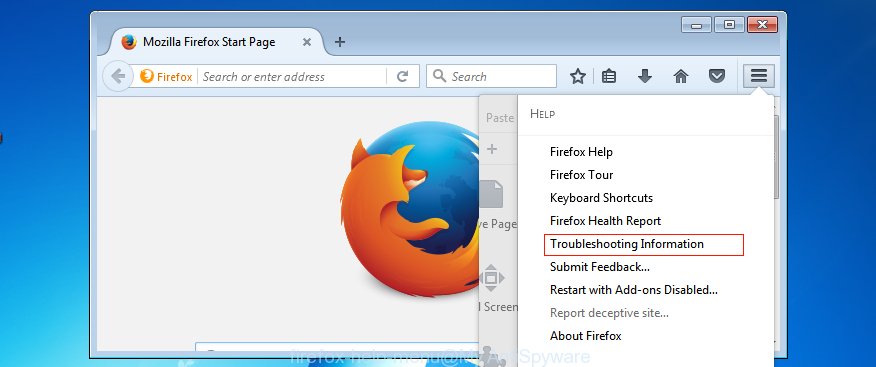
Select the “Troubleshooting information”. If you are unable to access the Help menu, then type “about:support” in your address bar and press Enter. It bring up the “Troubleshooting Information” page as on the image below.
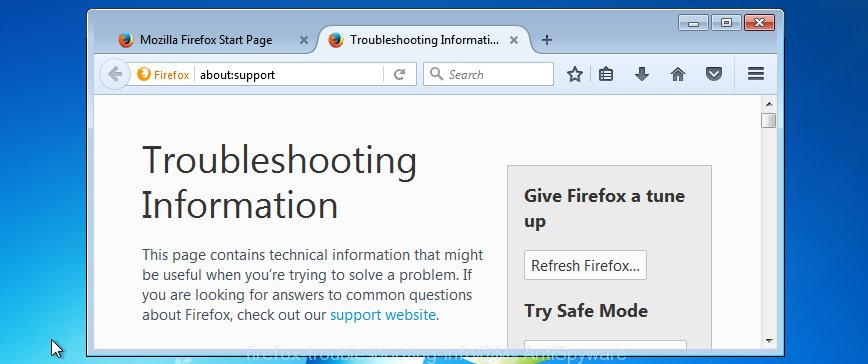
Click the “Refresh Firefox” button at the top right of the Troubleshooting Information page. Select “Refresh Firefox” in the confirmation dialog box. The Firefox will start a task to fix your problems that caused by the OperativeDesktop adware. After, it’s finished, click the “Finish” button.
Delete OperativeDesktop from Safari
If you find that Safari browser settings like home page, new tab page and default search provider having been changed by the OperativeDesktop adware, then you may restore your settings, via the reset internet browser procedure.
Run Safari web-browser. Next, select Preferences from the Safari menu.
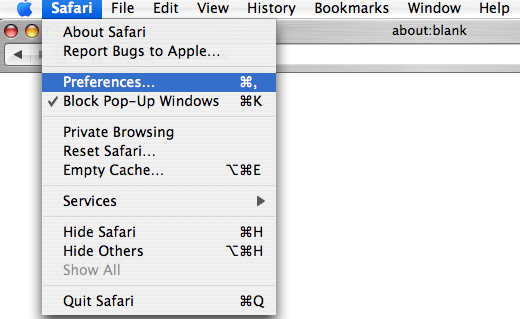
First, click the “Security” icon. Here, select “Block pop-up windows”. It will stop some types of popups.
Now, click the “Extensions” icon. Look for suspicious plugins on left panel, choose it, then click the “Uninstall” button. Most important to delete all questionable extensions from Safari.
Once complete, check your home page and search engine settings. Click “General” tab. Make sure that the “Homepage” field contains the website you want or is empty.
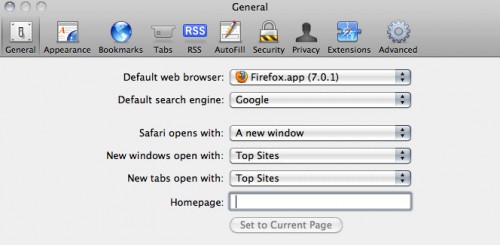
Make sure that the “Search engine” setting shows your preferred search provider. In some versions of Safari, this setting is in the “Search” tab.
Automatic Removal of OperativeDesktop
Using a malicious software removal tool to scan for and remove adware software hiding on your computer is probably the easiest solution to remove the OperativeDesktop adware. We advises the MalwareBytes Free utility for Mac MACs. It is the anti malware application for Mac that offers a free malicious software removal.
Use MalwareBytes Free to remove OperativeDesktop
Get rid of OperativeDesktop manually is difficult and often the adware is not fully removed. Therefore, we recommend you to run the MalwareBytes Free that are completely clean your machine. Moreover, this free program will allow you to remove malware, potentially unwanted applications, toolbars and browser hijacker infection that your MAC can be infected too.
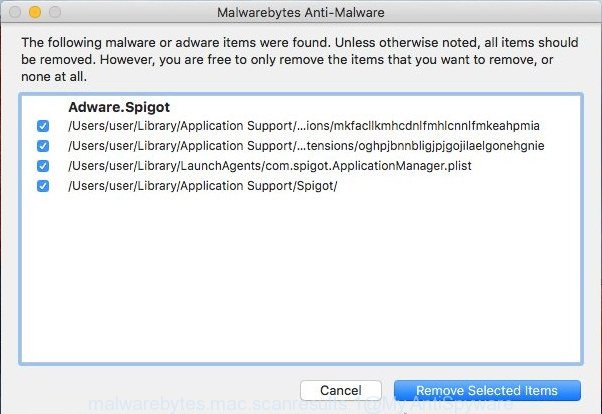
- Download MalwareBytes Free on your MAC system from the following link.
Malwarebytes Anti-malware (Mac)
20945 downloads
Author: Malwarebytes
Category: Security tools
Update: September 10, 2020
- After downloading is complete, please close all software and open windows on your MAC OS. Run the downloaded file. Follow the prompts.
- The MalwareBytes will run and show the main window.
- Further, press the “Scan” button . MalwareBytes Free program will scan through the whole MAC system for the OperativeDesktop adware software. While the MalwareBytes Anti-Malware (MBAM) program is checking, you can see number of objects it has identified as threat.
- As the scanning ends, MalwareBytes Free will show a screen that contains a list of malicious software that has been detected.
- Review the results once the utility has complete the system scan. If you think an entry should not be quarantined, then uncheck it. Otherwise, simply press the “Remove Selected Items” button.
- Close the Anti Malware and continue with the next step.
How to stay safe online
It is also critical to protect your web-browsers from harmful web sites and advertisements by using an ad-blocking program like AdGuard. Security experts says that it’ll greatly reduce the risk of malicious software, and potentially save lots of money. Additionally, the AdGuard can also protect your privacy by blocking almost all trackers.

Visit the following page to download the latest version of AdGuard for Mac.
3753 downloads
Author: © Adguard
Category: Security tools
Update: January 17, 2018
After the download is complete, start the downloaded file. You will see the “Setup Wizard” screen. Follow the prompts.
Each time, when you run your MAC OS, AdGuard will start automatically and stop undesired advertisements, block harmful and misleading web pages.
Finish words
Now your MAC system should be free of the OperativeDesktop adware. We suggest that you keep AdGuard (to help you block unwanted pop up advertisements and annoying harmful web pages) and MalwareBytes Anti-Malware (to periodically scan your MAC OS for new malware, hijackers and adware). Make sure that you have all the Critical Updates recommended for Mac operating system. Without regular updates you WILL NOT be protected when new browser hijacker infections, malicious software and adware are released.
If you are still having problems while trying to remove OperativeDesktop ads from your browser, then ask for help here.

















